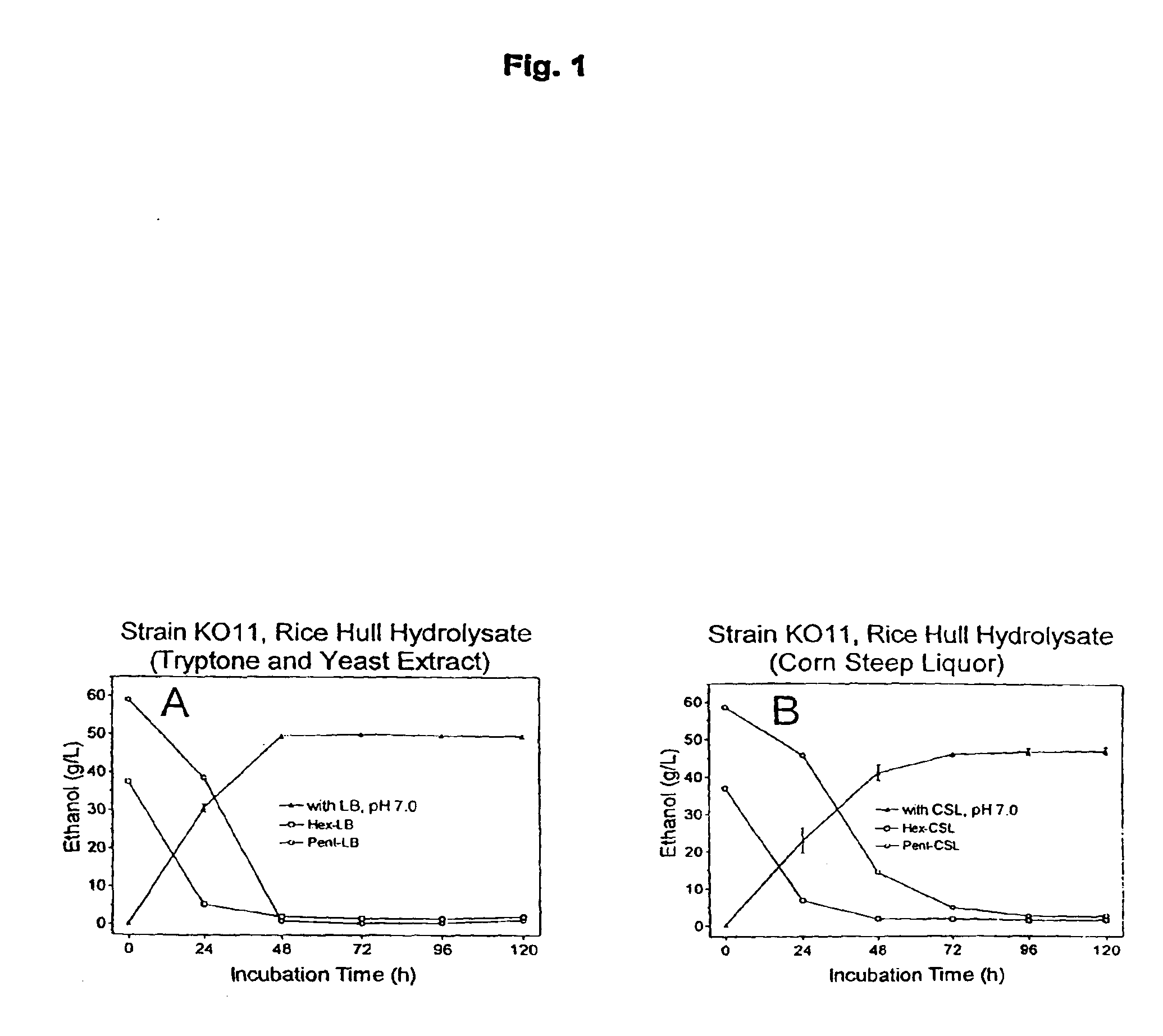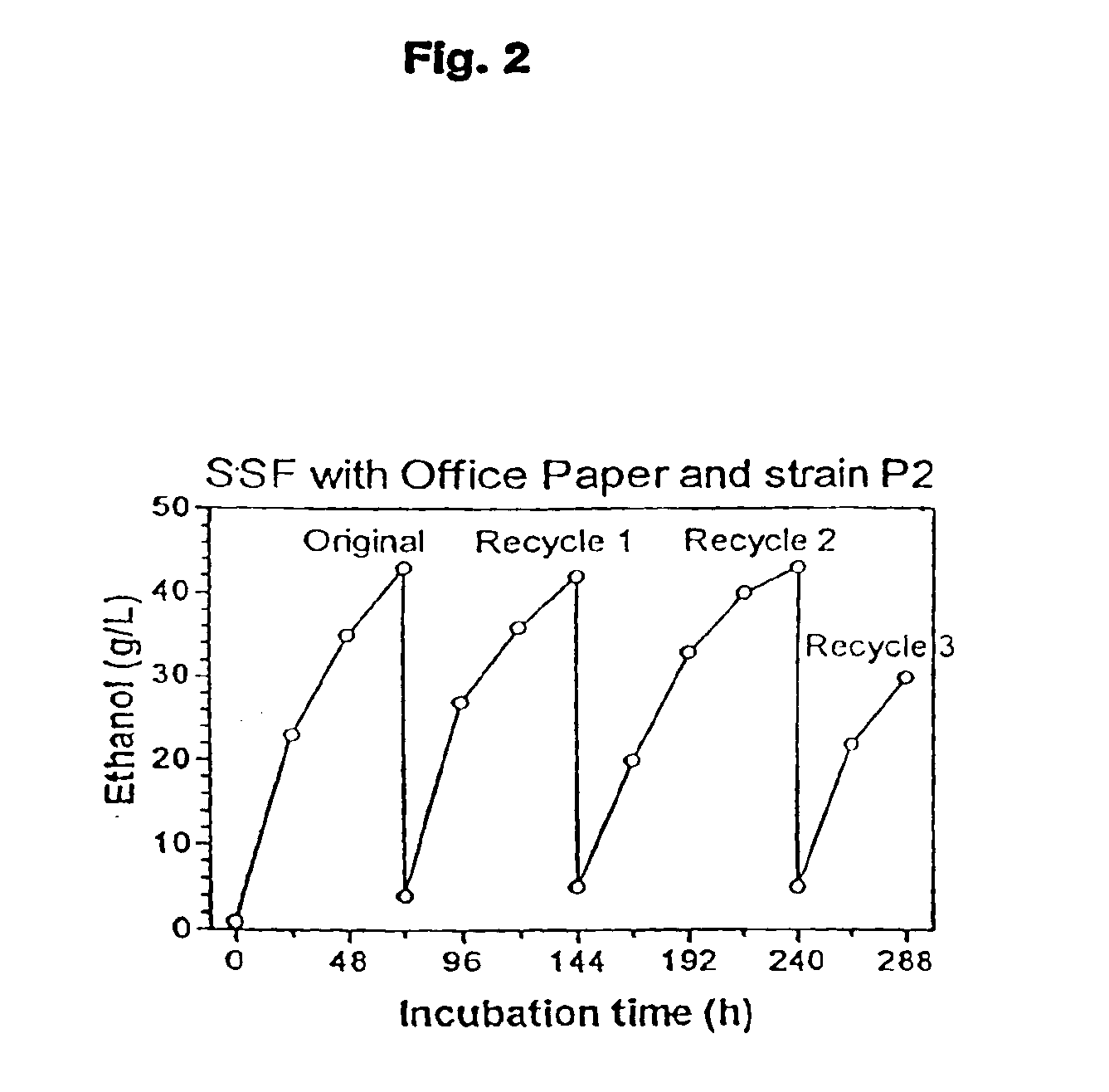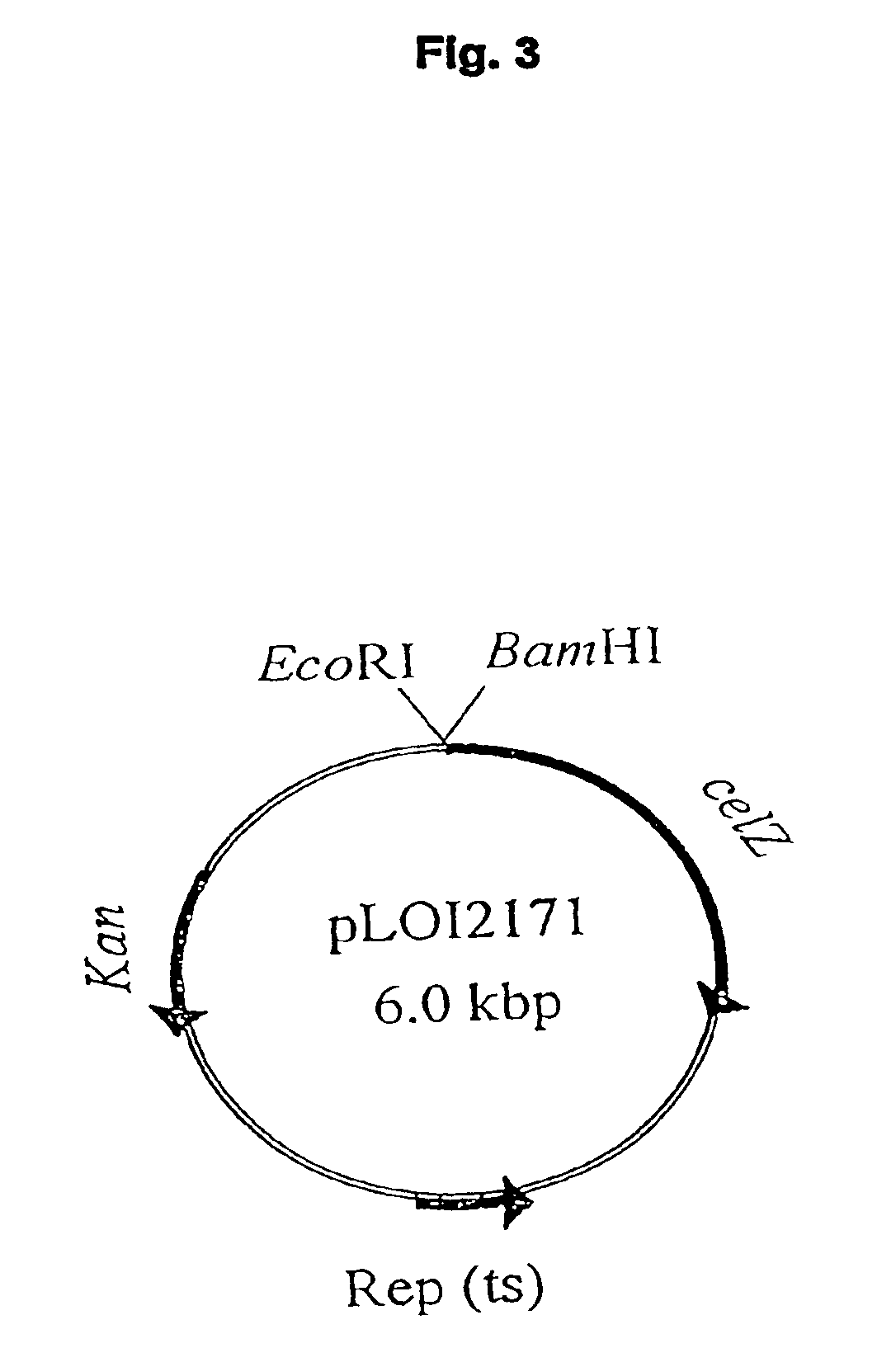Methods and compositions for simultaneous saccharification and fermentation
- Summary
- Abstract
- Description
- Claims
- Application Information
AI Technical Summary
Benefits of technology
Problems solved by technology
Method used
Image
Examples
example 1
Methods for Making Recombinant Escherichia Hosts Suitable for Fermenting Oligosaccharides into Ethanol
[0167]In this example, methods for developing and using Escherichia hosts suitable for fermenting oligosaccharides into ethanol are described. In particular, a strong promoter is identified which can be used to increase the expression of a polysaccharase (e.g., glucanase). In addition, genes from Erwinia chrysanthemi are employed to facilitate polysaccharase secretion thereby eliminating the need for cell disruption in order to release the desired polysaccharase activity.
[0168]Throughout this example, the following materials and methods are used unless otherwise stated.
Materials and Methods
Organisms and Culture Conditions
[0169]The bacterial strains and plasmids used in this example are listed in Table 1, below.
[0170]For plasmid constructions, the host cell E. coli DH5α was used. The particular gene employed encoding a polysaccharase (e.g., glucanase) was the celZ gene derived from E...
example 2
Recombinant Klebsiella Hosts Suitable for Fermenting Oligosaccharides into Ethanol
[0193]In this example, a recombinant Klebsiella host, suitable for use as a biocatalyst for depolymerizing and fermenting oligosaccharides into ethanol, is described.
[0194]Throughout this example, the following materials and methods are used unless otherwise stated.
Materials and Methods
Bacteria, Plasmids, and Culture Conditions
[0195]The strains and plasmids that were used in this exemplification are summarized in Table 4 below.
[0196]
TABLE 4Strains and Plasmids UsedStrains / PlasmidsPropertiesSources / ReferencesStrainsZymomonas mobilisPrototrophicIngram et al. (1988) Appl.CP4Environ. Micro. 54: 397-404DH5αlacZ M15 recABethesda Research LaboratoryHB101recA lacY recAATCC 37159M5A1PrototrophicWood et al. (1992) Appl.Environ. Micro. 58: 2103-2110P2Pfl::pdc adhB catWood et al. (1992) Appl.Environ. Micro. 58: 2103-2110SZ1pfl::pdc adhB cat; integrated celZ; tetSee textSZ2pfl::pdc adhB cat; integrated celZ; tetSee...
example 3
Synergistic Hydrolysis of Carboxymethyl Cellulose and Acid-swollen Cellulose by Two Endoglucanases (EGZ and EGY) from Erwinia chrysanthemi
[0222]This example describes production of the endoglucanases EGY and EGZ by recombinant E. coli and the synergistic hydrolysis of carboxymethyl cellulose (CMC) and acid-swollen cellulose by these endoglucanases.
[0223]Throughout this example, the following materials and methods are used unless otherwise stated.
Materials and Methods
Bacteria, Plasmids and Culture Conditions
[0224]Bacterial strains and plasmids used in this study are listed in Table 9.
[0225]
TABLE 9Strains and plasmids usedStrains / PlasmidsDescriptionsReferences / SourcesStrainsDH5αlacZ M15 recABethesda Research LaboratoryBPrototrophicATCC11303HB101recA lacY recAATCC37159TOP10F′This strain expresses the lac repressorInvitrogen(lacIq gene) from an F episomePlasmidspCR2.1-TOPOTOPO ™ TA Cloning vector, Apr, KmrInvitrogenpRK2013Kimr mobilizing helper plasmid (mob+)ATCCpCPP2006Spr, ca. 40 kbp...
PUM
| Property | Measurement | Unit |
|---|---|---|
| Temperature | aaaaa | aaaaa |
| Temperature | aaaaa | aaaaa |
| Temperature | aaaaa | aaaaa |
Abstract
Description
Claims
Application Information
 Login to View More
Login to View More - R&D
- Intellectual Property
- Life Sciences
- Materials
- Tech Scout
- Unparalleled Data Quality
- Higher Quality Content
- 60% Fewer Hallucinations
Browse by: Latest US Patents, China's latest patents, Technical Efficacy Thesaurus, Application Domain, Technology Topic, Popular Technical Reports.
© 2025 PatSnap. All rights reserved.Legal|Privacy policy|Modern Slavery Act Transparency Statement|Sitemap|About US| Contact US: help@patsnap.com



